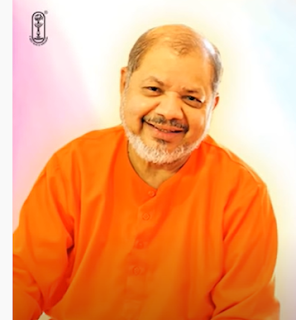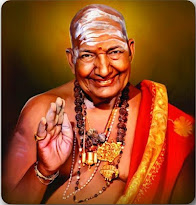Katopanishad Session 5
Inspirations from Talks by Pujya Guruji Swami Tejomayananda
1.1.14 – Granting of second boon
स्वर्ग्यमग्निं नचिकेतः प्रजानन् ।
अनन्तलोकाप्तिमथो प्रतिष्ठां
विद्धि त्वमेतं निहितं गुहायाम् ॥१४॥
Lord Yama says: “Oh Nachiketa! I, who am well aware (prajAnan) of this Fire, will tell you this Agni (rite) which leads to heaven (svargyam), you understand it from me (nibodha) with attention. This Fire is the attainment of infinite world (anantalokAptim - relatively infinite world – heaven) and basis of this whole universe (pratishtAm), know it to be lodged in the cave of intellect (nihitam guhAyAm) of those who know it.”
PratishtA – This fire is not just the ordinary fire we know, it is the basis of this world. Fire is not just flames, It is the heat element whose ultimate reality is Brahman. In its essence, Fire is the very root of the world.
(Here Fire, refers to VirAta– Consciouness associated with Total Gross world)
1.1.15 Agni-vidya is given
लोकादिमग्निं तमुवाच तस्मै
या इष्टका यावतीर्वा यथा वा ।
स चापि तत्प्रत्यवदद्यथोक्तं
अथास्य मृत्युः पुनरेवाह तुष्टः ॥१५॥
To him (Nachiketas), Mrtyu told the knowledge of Fire, which precedes the world (Virat is the first embodied being), what type of bricks are to be used, how many, how these are to be arranged, how the fire is to be kindled, etc. This is not the main topic of Upanishad and so is not dealt in detail. Nachiketas too repeated verbatim (pratyavadat) with understanding and with all the details (when tested by Yama). Yama Bhagavan was very pleased once more and wanted to give one more boon besides the three.
This again shows adhikari lakshana – medhavi purusho vidvan. Medha is the ability to understand, retain, remember and reproduce.
1.1.16 Bonus boon
तमब्रवीत् प्रीयमाणो महात्मा
वरं तवेहाद्य ददामि भूयः ।
तवैव नाम्ना भविताऽयमग्निः
सृङ्कां चेमामनेकरूपां गृहाण ॥ १६॥
If we are pleased with someone we want to give something. Yamaraj is mahAtmA – one who has a large heart (akshudra-buddhi – no narrowness). Pleased with shishya’s quality, He granted then and there that the ritual will be named after Nachiketas and also presented a garland made of gems of various hues.
srinkAm – could mean ratnamala made of tinkling gems of various hues or
knowledge of some other rituals capable of giving various fruits (various karma gati); or it could mean the Necklace of Grace of Guru, Yama Bhagavan.
1.1.17 Praise of the ritual
त्रिणाचिकेतस्त्रिभिरेत्य सन्धिं
त्रिकर्मकृत्तरति जन्ममृत्यू ।
ब्रह्मजज्ञं देवमीड्यं विदित्वा
निचाय्येमाँ शान्तिमत्यन्तमेति ॥ १७॥
Anyone who performs this ritual as pointed below
TrinAchiketah – one who performs the ritual thrice or has received the knowledge (Shravanam), reflected deeply (Mananam) & practised the ritual (anushtAnam)
Tribhih Etya - associating with these 3 –
- Imbibing knowledge and samskaras from mother, father, guru with respect, devotion, gratitude.
- Imbibing knowledge from Vedas, Smriti and noble people
- Or knowledge through direct perception (pratyaksha), inference (anumAna) and Veda shabda
- Because it is known that we gain clarity though these associations.
- And so person’s heart must be filled with devotion & gratitude for all those from whom he receives Knowledge.
trikarma krit – one who does 3 things – sacrifice (yagna), charity (dana) and austerity (tapa) or yagna-adyayana-dana karta
viditva - Knowing brahmajajgnam– one who is born of hiranyagarbha (brahmaja) and omniscient (jnah) and is most worshipful/praiseworthy (Idyam)
nicchAya – meditating on Virat as oneself – upasana
Such a seeker gets atyanta shanti – peace;
How? Through the ritual and meditation on VirAta Purusha as oneself (the Total Consciousness associated with Gross world), one’s mind gets purified of selfishness, it expands, becomes subtler and identifies with the totality. The worldly things are too petty to disturb his peace attained by oneness with totality.
Thus the result of the karma and upasana is svargaloka prApti - vairAjya padam. But if done without desires the action gives purity of mind and the meditation gives single focus of intellect.
(vidyaya mrtyum tirtva, avidyaya amrtam ashnute – Isha)
(annam brahmEti vyajAnAt – Tai)
1.1.18 – confirmation of the result
त्रिणाचिकेतस्त्रयमेतद्विदित्वा
य एवं विद्वाँश्चिनुते नाचिकेतम् ।
स मृत्युपाशान् पुरतः प्रणोद्य
शोकातिगो मोदते स्वर्गलोके ॥ १८॥
One who knowing the three details of the type, number and arrangement of bricks, does the nAchiketaritual as said above and meditates as said above (evam vidvAn) such an individual casting off (pranOdya) the bondages of death (disease, etc.) before the fall of the body (puratah); becoming free of sorrow; rejoices in svarga loka.
We see Yamaraj already referring to the ritual as nachiketa agni.
1.1.19 – conclusion of second boon and karmakanda
एष तेऽग्निर्नचिकेतः स्वर्ग्यो
यमवृणीथा द्वितीयेन वरेण ।
एतमग्निं तवैव प्रवक्ष्यन्ति जनासः
तृतीयं वरं नचिकेतो वृणीष्व ॥ १९॥
Yamaraj says: “This knowledge of Fire; which is the means of svargam is that what you had asked for by your second boon. This knowledge will be famously known by your name (as granted by me through the extra boon). Choose the third boon, Oh Nachiketa.” By granting the third one, Yamaraj can be free of all obligations. With this concludes the second boon
Up till now, we have seen the virtues of seeker through character of Nachiketas. This is adhikarilakshana. Now we enter into the vishaya, actual subject matter of the Upanishad. The first boon was for his father, second for the society and now the third boon…
Key takeaways:
- Medha - the ability to understand, retain, remember and reproduce is yet another quality of a seeker.



Comments
Post a Comment